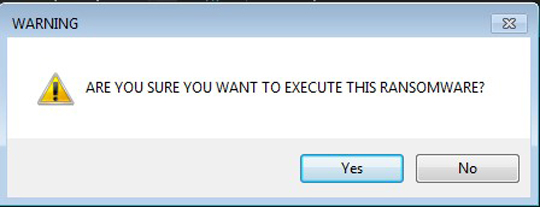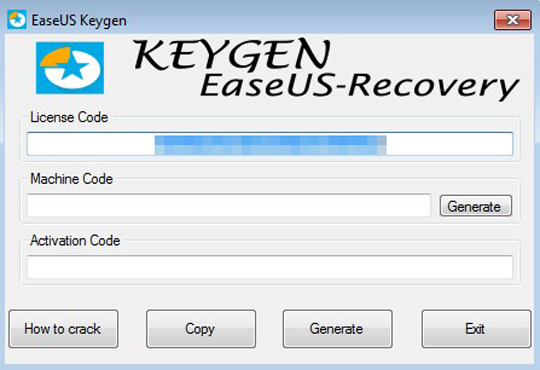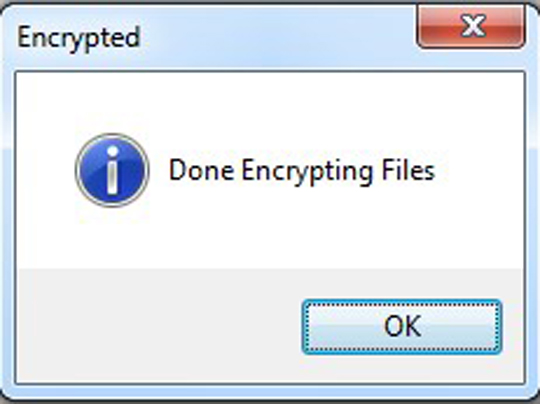RANSOM_NETCRYPT.A
Trojan-Ransom.MSIL.Agent.aaq (KASPERSKY), Mal/Ramsil-H (SOPHOS_LITE), Trojan.Ransom.NetCrypton.A (BITDEFENDER)
Windows


Threat Type: Ransomware
Destructiveness: No
Encrypted: No
In the wild: Yes
OVERVIEW
This Ransomware arrives on a system as a file dropped by other malware or as a file downloaded unknowingly by users when visiting malicious sites.
It encrypts files found in specific folders.
TECHNICAL DETAILS
Arrival Details
This Ransomware arrives on a system as a file dropped by other malware or as a file downloaded unknowingly by users when visiting malicious sites.
Installation
This Ransomware drops a copy of itself in the following folders using different file names:
- {malware file path}\{malware file name}.exe
Other System Modifications
This Ransomware changes the desktop wallpaper by modifying the following registry entries:
HKEY_CURRENT_USER\Control Panel\Desktop
Wallpaper = %User Temp%\rNsmWlppr.bmp

Dropping Routine
This Ransomware drops the following files:
- %User Temp%\rNsmWlppr.bmp
(Note: %User Temp% is the user's temporary folder, where it usually is C:\Documents and Settings\{user name}\Local Settings\Temp on Windows 2000, Windows Server 2003, and Windows XP (32- and 64-bit); C:\Users\{user name}\AppData\Local\Temp on Windows Vista (32- and 64-bit), Windows 7 (32- and 64-bit), Windows 8 (32- and 64-bit), Windows 8.1 (32- and 64-bit), Windows Server 2008, and Windows Server 2012.)
Other Details
This Ransomware does the following:
- Upon execution of the malware, it displays the following message box below:

- On the previous window, the “no” button will exit the malware while the “yes” will proceed to display the window shown below. Exiting this window will start the encryption routine.

- After its encryption routine it shows the following message box:

- It sets the file attribute of the running malware file to hidden
Ransomware Routine
This Ransomware encrypts files found in the following folders:
- {system drive}(usually C):\
It avoids encrypting files with the following strings in their file name:
- bootmgr
- BOOTNXT
- hiberfil.sys
- pagefile.sys
- swapfile.sys
- desktop.ini
- NTUSER.DAT
- ntuser.dat
- {malware file name}
- .db
- .lnk
It avoids encrypting files found in the following folders:
- Windows
It appends the following extension to the file name of the encrypted files:
- .encrptd (for files with file extensions)
- .tmpenc.encrptd (for files without file extensions)
SOLUTION
Step 1
Before doing any scans, Windows XP, Windows Vista, and Windows 7 users must disable System Restore to allow full scanning of their computers.
Step 2
Note that not all files, folders, and registry keys and entries are installed on your computer during this malware's/spyware's/grayware's execution. This may be due to incomplete installation or other operating system conditions. If you do not find the same files/folders/registry information, please proceed to the next step.
Step 3
Remove the malware/grayware file dropped/downloaded by RANSOM_NETCRYPT.A. (Note: Please skip this step if the threat(s) listed below have already been removed.)
- {malware file path}\{malware file name}.exe
Step 4
Search and delete these files
- %User Temp%\rNsmWlppr.bmp
Step 5
Scan your computer with your Trend Micro product to delete files detected as RANSOM_NETCRYPT.A. If the detected files have already been cleaned, deleted, or quarantined by your Trend Micro product, no further step is required. You may opt to simply delete the quarantined files. Please check the following Trend Micro Support pages for more information:
Step 6
Reset your Desktop properties
Step 7
Restore encrypted files from backup.
Did this description help? Tell us how we did.


